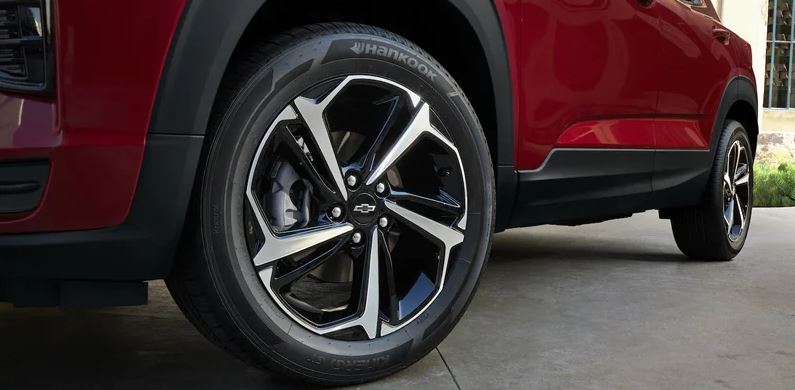
Your Chevy needs good quality tires for driving safety and must be correctly inflated. Over or under-inflated tires will cause additional wear on the tires or could even lead to an accident. As your Chevy dealer, we’d like to advise you on how to check tire pressure and preserve your tires
Know Your Tire Pressure
Chevy tire pressure varies depending on the model. The tire pressure for your car can be found in two places. Your car manual is a treasure trove of important information, and you’ll find your car’s pressure under the alphabetized list of topics in the manual. The tire pressure can also be found on a metal plate inside the door jam of the front passenger door.
Your Chevy may have different tire pressures for the front and rear tires. This depends on whether you have an FWD, RWD, or AWD drivetrain. It’s important to note that the pressure listed on your tires is the maximum pressure for the tire, not the correct pressure for your car.
You Need a Gauge
To check the tire pressure, you’ll need a pressure gauge. You could use a gauge at your nearest gas station, but we advise against that. Their gauge may be infrequently calibrated and this could lead to a faulty pressure reading. We advise buying a digital or manual pressure gauge to give you an accurate reading. In addition, you can use your gauge at any time.
Steps in Checking Pressure
Checking the pressure is an easy process when you know what the pressure should be and you have a gauge. It only requires the few steps we’ve listed below.
Write the Correct Pressure Down
This may seem obvious, but it can be easy to forget if you’ve just glanced at the plate or the manual. Write down the correct pressures so you can compare them.
Test the First Tire
Remove the valve cap and connect your tire gauge to the tire nozzle. When the gauge is connected, watch the readout panel on a digital gauge or observe the extendable strip on a manual gauge. The number they show is your actual pressure in that tire. Write this pressure down next to the correct pressure for that tire.
Repeat this step with the next tire until you’ve checked all the tires.
Compare Readings
Once you have all the actual pressure readings, you can compare them to the expected readings. You now know if the pressure is correct or if a tire is over or under-inflated.
We can also quickly check your tire pressure to save you the time. Call our service department today at Blue Ribbon Chevrolet.






